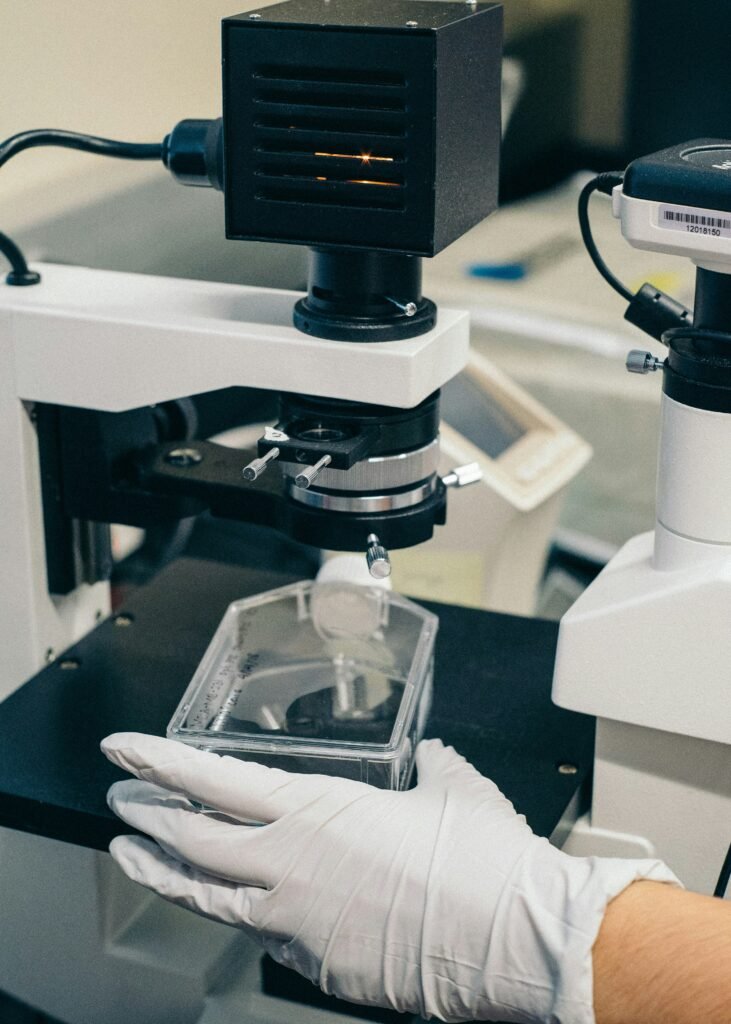Imagine a world where manufacturing processes are faster, more efficient, and more sustainable. A world where materials are stronger, lighter, and more versatile. Well, that world is not far from becoming a reality thanks to the latest advancements in materials and manufacturing processes. From cutting-edge techniques to groundbreaking materials, the field is constantly evolving, pushing the boundaries of what we thought was possible. In this article, we will explore some of the most exciting developments in this rapidly evolving industry, and how they are shaping the future of manufacturing. Get ready to be amazed by the incredible possibilities that lie ahead!
Advanced Materials

This image is property of images.unsplash.com.
1.1 Nanomaterials
Nanomaterials are revolutionizing the world of manufacturing with their unique properties and applications. These materials are engineered and manipulated at the nanoscale, allowing for enhanced mechanical, electrical, and chemical properties. For instance, carbon nanotubes exhibit exceptional strength and conductivity, making them ideal for applications in electronics and aerospace industries.
Nanomaterials also offer significant improvements in the field of medicine. Nano-sized drug delivery systems enable targeted drug release, minimizing side effects and improving efficacy. Additionally, nanomaterials such as graphene have proven to be highly effective in water purification processes, removing pollutants and making water safe for consumption.
1.2 Smart Materials
Smart materials are another exciting development in the world of advanced materials. These materials have the ability to respond to external stimuli, such as temperature, light, or electricity, and change their physical or chemical properties accordingly. Shape memory alloys, for example, have the ability to regain their original shape after being deformed, making them ideal for applications in biomedical devices and aerospace structures.
Other smart materials, such as piezoelectric materials, can generate electrical charges when subjected to mechanical stress. These materials find applications in sensors and actuators, enabling precise control and automation in manufacturing processes. The versatility of smart materials opens up endless possibilities for innovation and optimization in various industries.
1.3 Biomaterials
Biomaterials are materials that interact with biological systems and can be used for medical purposes, from drug delivery systems to tissue engineering. These materials possess biocompatibility, meaning they don’t elicit harmful responses from the body. This allows for the development of implants, prosthetics, and medical devices that can seamlessly integrate with the human body.
Biomaterials can also assist in tissue regeneration and repair. For example, scaffolds made from biodegradable polymers can provide support for the growth of new tissue in damaged organs. Moreover, biomaterials can mimic the structure and properties of natural tissues, facilitating the development of artificial organs and reducing the need for organ transplantation.
2. 3D Printing
3D printing, also known as additive manufacturing, has gained significant attention in recent years due to its ability to produce complex and customized objects layer by layer. This technology enables the manufacturing of intricate designs that are difficult or impossible to create using traditional methods.
2.1 Additive Manufacturing
Additive manufacturing eliminates the need for molds or tools, offering greater design freedom and reducing production time and costs. This makes it particularly suitable for prototyping and small scale production. It enables the creation of prototypes and models that accurately represent the final product, allowing for testing and evaluation before full-scale manufacturing.
Moreover, additive manufacturing allows for the production of customized products tailored to individual needs and preferences. From personalized medical implants to unique consumer goods, this technology has the potential to revolutionize various industries and create a more customer-centric manufacturing approach.
2.2 Customization and Personalization
3D printing enables customization and personalization on a whole new level. By inputting digital designs, it is possible to produce products that fit each customer’s specific requirements and preferences. For instance, in the fashion industry, designers can create garments that perfectly match a customer’s body measurements and style preferences.
Beyond personalization, 3D printing also offers the possibility of on-demand manufacturing. This means that products can be produced as they are needed, reducing inventory costs and wastage. By eliminating the need for mass production and long supply chains, 3D printing promotes a more sustainable and efficient approach to manufacturing.
2.3 Prototyping and Rapid Manufacturing
One of the most significant advantages of 3D printing is its ability to rapidly produce prototypes. Traditional prototyping methods can be time-consuming and costly. With 3D printing, designers can quickly iterate and refine their designs, significantly reducing development time.
Additionally, 3D printing enables the production of spare parts, reducing the reliance on traditional manufacturing methods for small-scale production. This is particularly valuable for industries such as aviation and automotive, where the availability of spare parts is crucial to operational efficiency.
3. Robotics in Manufacturing
The integration of robotics in manufacturing processes has revolutionized the industry by enabling increased automation, efficiency, and safety.
3.1 Automation and Efficiency
Robots have the potential to perform repetitive and tedious tasks with a higher degree of accuracy, speed, and consistency compared to human workers. This automation improves overall productivity and efficiency by reducing human errors and minimizing production downtime.
By taking over mundane and physically demanding tasks, robots allow human workers to focus on more complex and value-added activities. This collaboration between humans and robots optimizes the manufacturing process, leading to improved productivity and a higher quality of products.
3.2 Collaborative Robots
Collaborative robots, also known as cobots, are designed to work safely alongside human workers without the need for cumbersome safety barriers. These robots are equipped with sensors and advanced algorithms that enable them to detect human presence and respond accordingly to ensure a safe working environment.
Cobots can be easily programmed and reprogrammed to adapt to changing production needs, making them highly flexible and versatile. They can assist in tasks such as assembly, material handling, and quality control. The adoption of cobots in manufacturing processes provides the opportunity for production lines to be more efficient, adaptive, and responsive.

This image is property of images.unsplash.com.
3.3 Assembly and Handling
Robots excel in tasks that require precision and dexterity, making them ideal for assembly and handling operations in manufacturing. They can securely and accurately assemble intricate components, reducing the risk of errors and ensuring consistent quality.
Robotic arms equipped with advanced grippers and sensors can handle fragile and delicate materials without causing damage. This is particularly beneficial in industries such as electronics and pharmaceuticals, where precision and product integrity are critical. By integrating robots into assembly and handling processes, manufacturers can achieve higher throughput, lower costs, and improved safety.
4. Internet of Things (IoT) in Manufacturing
The Internet of Things (IoT) has transformed various industries, and manufacturing is no exception. IoT in manufacturing enables the collection and analysis of real-time data, leading to improved efficiency, productivity, and decision-making.
4.1 Smart Factories
IoT technologies, such as sensors and connectivity, allow machines and equipment to be interconnected and communicate with each other. This enables the creation of smart factories, where production processes can be monitored, optimized, and controlled in real-time.
With IoT, manufacturers can track machine performance, detect potential issues before they escalate, and schedule maintenance activities more efficiently. Real-time monitoring of machine conditions can also identify patterns and anomalies, leading to predictive maintenance and reduced downtime. The integration of IoT in manufacturing processes allows for agile production lines, reduced costs, and increased competitiveness.
4.2 Predictive Maintenance
Predictive maintenance is a key application of IoT in manufacturing. By continuously monitoring equipment through sensors, manufacturers can collect data on machine performance, temperature, vibration, and other parameters. Advanced analytics and machine learning algorithms can then analyze this data to predict and prevent equipment failures.
By implementing predictive maintenance strategies, manufacturers can optimize maintenance schedules, reduce unplanned downtime, and extend the lifespan of their machinery. This not only leads to cost savings but also ensures continuous production and customer satisfaction.
4.3 Supply Chain Optimization
IoT technologies offer significant benefits for supply chain management in manufacturing. By incorporating sensors and connectivity into products and packaging, manufacturers can track and monitor their movement throughout the supply chain.
Real-time information on inventory levels, product location, and condition allows for better inventory management, reduced stockouts, and improved logistics planning. IoT-enabled supply chain optimization improves efficiency, reduces costs, and enables just-in-time manufacturing, improving overall competitiveness.
5. Advanced Machining Techniques
Advanced machining techniques have evolved to meet the increasing demands for precision and efficiency in manufacturing processes. These techniques utilize cutting-edge technologies and methodologies to achieve superior results.
5.1 High-Speed Machining
High-speed machining involves using tools with high rotational speeds and advanced cutting strategies to achieve faster material removal rates. This technique is particularly beneficial for the production of complex and intricate components, as it enables precise and efficient cutting.
By reducing cycle times and optimizing cutting parameters, high-speed machining improves productivity and reduces manufacturing costs. It also leads to improved surface finish and dimensional accuracy, ensuring the quality of the final product.
5.2 Electrical Discharge Machining (EDM)
Electrical Discharge Machining (EDM) is a non-traditional machining process that utilizes electrical discharges to remove material from the workpiece. This technique is particularly suitable for challenging materials such as hardened steels and exotic alloys.
EDM allows for the production of intricate shapes and fine details that are difficult to achieve with conventional machining techniques. It also eliminates the risk of tool wear, as the tool does not come into contact with the workpiece. EDM is widely used in industries such as aerospace, automotive, and mold making, where precision and complex geometries are essential.
5.3 Laser Cutting and Welding
Laser cutting and welding are versatile and precise machining techniques widely used in various industries. Laser cutting involves the use of focused laser beams to melt or vaporize the material, producing clean and precise cuts. It is particularly beneficial for cutting thin and delicate materials, such as sheet metal.
Laser welding, on the other hand, utilizes high-energy laser beams to join materials together without the need for additional filler materials. This technique offers high welding speeds, narrow heat-affected zones, and minimal distortion, making it highly favorable for applications in the automotive, aerospace, and electronics industries.
The use of laser cutting and welding ensures superior quality, high versatility, and cost-effective manufacturing processes.
6. Sustainable Manufacturing
Sustainable manufacturing aims to reduce the environmental impact of manufacturing processes while maintaining economic viability. By adopting sustainable practices, manufacturers can optimize resource utilization, minimize waste generation, and reduce energy consumption.
6.1 Circular Economy
The circular economy concept revolves around the idea of minimizing waste and maximizing the value of resources. In manufacturing, this involves adopting strategies such as recycling, remanufacturing, and reducing material consumption.
By implementing closed-loop systems and recovering materials from products at the end of their lifecycle, manufacturers can create a circular flow of resources. This reduces the reliance on virgin materials, minimizes waste generation, and decreases the carbon footprint.

This image is property of images.unsplash.com.
6.2 Energy and Resource Efficiency
Energy and resource efficiency are crucial components of sustainable manufacturing. Manufacturers can achieve energy efficiency by optimizing production processes, utilizing energy-efficient equipment, and implementing energy management systems.
Resource efficiency, on the other hand, involves minimizing material waste through better inventory management, production planning, and lean manufacturing principles. It also includes the adoption of materials with a lower environmental impact and the implementation of recycling and waste management strategies.
By improving energy and resource efficiency, manufacturers can reduce their environmental impact, lower operational costs, and enhance long-term sustainability.
6.3 Waste Reduction and Recycling
Waste reduction and recycling play a vital role in sustainable manufacturing. By implementing waste minimization strategies, such as lean manufacturing and process optimization, manufacturers can reduce the generation of waste at the source.
Recycling involves the collection and processing of waste materials to produce new products or raw materials. By incorporating recycled materials into manufacturing processes, manufacturers can reduce the demand for virgin resources and minimize the environmental impact associated with extraction and processing.
Implementation of waste reduction and recycling measures not only contributes to sustainable manufacturing but also enhances public perception and corporate social responsibility.
7. Advanced Coatings and Surface Treatments
Advanced coatings and surface treatments enhance the performance and durability of products by providing additional functionalities and protection against wear, corrosion, and other environmental factors.
7.1 Thin Film Coatings
Thin film coatings are applied to surfaces to modify their properties without altering the bulk material. These coatings can provide enhanced hardness, corrosion resistance, lubricity, or electrical conductivity.
For instance, thin film coatings made of diamond-like carbon (DLC) enhance the wear resistance of cutting tools, while anti-reflective coatings improve the efficiency of solar panels. The application of thin film coatings in various industries enhances product performance and extends the lifespan of components.
7.2 Self-healing Coatings
Self-healing coatings have the ability to repair minor damages such as scratches or cracks without human intervention. These coatings contain microcapsules or nanoparticles that release healing agents when the coating is damaged.
Self-healing coatings are particularly valuable in industries where surface damages can compromise the functionality or integrity of the product, such as aerospace or automotive. By incorporating self-healing coatings, manufacturers can improve product durability, reduce maintenance costs, and enhance customer satisfaction.
7.3 Anti-corrosion Treatments
Corrosion is a significant concern in industries where products or components are exposed to harsh environments. Anti-corrosion treatments, such as coatings or surface treatments, provide a barrier between the material and the corrosive agents, preventing degradation.
For example, galvanization involves coating steel with a layer of zinc to protect it from corrosion. Similarly, anodizing is used to create a protective layer on aluminum surfaces. Anti-corrosion treatments ensure the longevity and reliability of products, reducing the need for frequent replacements and repairs.
8. Composite Materials
Composite materials consist of a combination of different materials to create a material with superior properties. These materials offer a high strength-to-weight ratio, excellent thermal and electrical conductivity, and corrosion resistance.
8.1 Carbon Fiber Reinforced Polymers (CFRP)
Carbon fiber reinforced polymers (CFRP) are lightweight materials that offer exceptional strength and stiffness. They are widely used in industries such as aerospace, automotive, and sports equipment manufacturing.
CFRP materials provide high impact resistance and dimensional stability, making them ideal for applications requiring lightweight yet robust structures. The use of CFRP in manufacturing leads to improved fuel efficiency, increased performance, and reduced environmental impact.
8.2 Glass Fiber Reinforced Polymers (GFRP)
Glass fiber reinforced polymers (GFRP) are similar to CFRP but utilize glass fibers instead of carbon fibers. GFRP materials offer good flexibility, high tensile strength, and resistance to chemicals and weathering.
GFRP finds applications in various industries, from construction and infrastructure to marine and renewable energy. Its lightweight nature and corrosion resistance make it an ideal substitute for traditional materials such as steel or concrete.
8.3 Ceramic Matrix Composites (CMCs)
Ceramic matrix composites (CMCs) are high-temperature materials that exhibit exceptional mechanical and thermal properties. They are composed of ceramic fibers embedded in a ceramic matrix.
CMCs have applications in extreme environments, such as aerospace, defense, and energy. Their high-temperature resistance, low density, and excellent mechanical strength make them suitable for turbine engines, exhaust systems, and other components subjected to high thermal and mechanical stresses.
The use of composite materials in manufacturing leads to improved performance, reduced weight, and enhanced sustainability.
9. Artificial Intelligence in Manufacturing
Artificial Intelligence (AI) has made significant advancements in recent years and is increasingly being integrated into manufacturing processes. AI in manufacturing enables optimization, automation, and intelligent decision-making.
9.1 Machine Learning and Predictive Analytics
Machine learning algorithms can analyze large volumes of data generated by manufacturing processes and identify patterns or anomalies. By continuously monitoring and analyzing data, AI systems can predict machine failure, optimize maintenance schedules, and prevent unplanned downtime.
Predictive analytics allows manufacturers to make data-driven decisions, optimize production processes, and ensure consistent quality. By leveraging AI in manufacturing, manufacturers can improve operational efficiency, reduce costs, and enhance productivity.
9.2 Quality Control and Defect Detection
AI technologies, such as computer vision and machine learning, can be applied to quality control processes to detect defects and ensure product quality. Visual inspection systems equipped with AI algorithms can identify and classify defects with high accuracy and speed.
Furthermore, AI-enabled systems can also provide real-time feedback and control mechanisms to adjust manufacturing processes and prevent the production of defective products. By integrating AI into quality control processes, manufacturers can minimize rejection rates, improve product consistency, and enhance customer satisfaction.
9.3 Production Planning and Optimization
AI systems can optimize production planning by considering various factors such as demand, resource availability, and machine capabilities. By analyzing historical data and real-time information, AI algorithms can generate optimal production schedules and resource allocation plans.
Moreover, AI systems can continuously learn and adapt to changing production conditions, enabling manufacturers to quickly respond to demand fluctuations and unforeseen challenges. AI-driven production planning and optimization enhance efficiency, reduce lead times, and enable just-in-time manufacturing.
10. Advanced Sensing and Monitoring
Advanced sensing and monitoring technologies play a crucial role in manufacturing processes by providing real-time data and enabling proactive decision-making.
10.1 Non-destructive Testing
Non-destructive testing (NDT) techniques allow for the inspection and evaluation of materials and components without causing damage. These techniques utilize various technologies such as ultrasonic testing, radiography, and thermography to detect flaws, discontinuities, or structural abnormalities.
NDT ensures the quality and integrity of products without compromising their functionality. By implementing advanced NDT techniques, manufacturers can reduce the risk of product failure, enhance safety, and improve reliability.
10.2 Real-time Monitoring
Real-time monitoring systems enable the collection of data from various sensors distributed throughout the manufacturing process. These sensors can measure parameters such as temperature, pressure, vibration, or machine performance.
By analyzing real-time data, manufacturers can detect deviations from normal operating conditions, identify potential issues, and take proactive measures to prevent equipment failure or production delays. Real-time monitoring enhances process control, quality assurance, and overall productivity.
10.3 Condition-based Maintenance
Condition-based maintenance (CBM) utilizes data from sensors and monitoring systems to determine the optimal timing for maintenance activities. By continuously monitoring equipment conditions, manufacturers can detect trends or anomalies that indicate potential failures.
CBM allows for more efficient allocation of maintenance resources, as maintenance activities are only performed when necessary. This reduces maintenance costs, minimizes downtime, and extends the lifespan of equipment.
By implementing advanced sensing and monitoring techniques, manufacturers can optimize maintenance strategies, improve equipment reliability, and enhance operational efficiency.
In summary, advancements in materials and manufacturing processes are driving innovation and reshaping industries across the globe. From nanomaterials and 3D printing to robotics and artificial intelligence, these technologies offer unprecedented opportunities for improved efficiency, customization, and sustainability. By embracing these advancements, manufacturers can stay at the forefront of their respective industries and create a future of endless possibilities.
